
TONY Design 24-27Ton/Hour Coconut Shell Production Line Specification
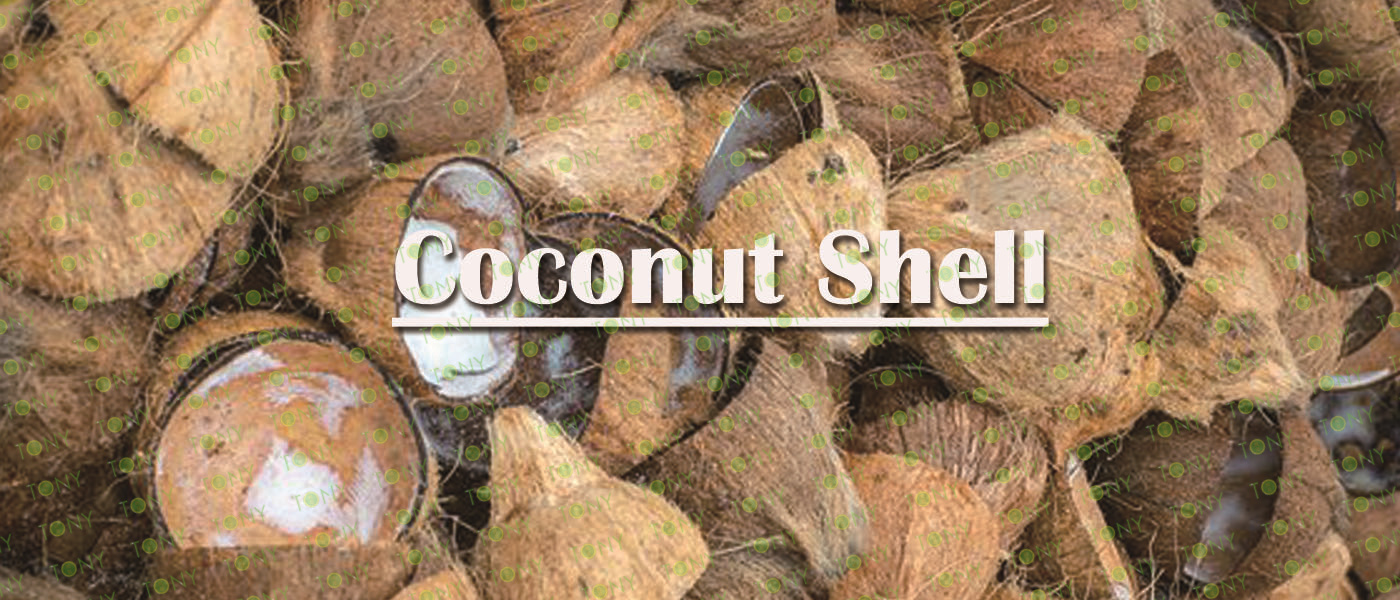
The distribution of coconut shells is closely related to the origin of coconuts. The following are some countries where coconut shells are mainly distributed:
Southeast Asia:
Indonesia: As the world's largest coconut producer, Indonesia has vast tropical islands and suitable climatic conditions. The coconut planting area is extensive, and its coconut shell production is also among the best in the world.
Philippines: The country consists of many islands and has rich tropical resources. It has a long history of coconut planting and is one of the important coconut production areas. Its coconut shell resources are also rich.
Malaysia: Malaysia has a developed coconut industry. There are a large number of coconut trees growing in its coastal areas and islands. The coconut shell production is considerable. The country also pays attention to the deep processing of coconuts. Coconut shells are processed into various products and exported to the global market.
Thailand: Thailand is also one of the main coconut producers in Southeast Asia. Its coconut production is high and its coconut shell resources are rich. It is widely used in local handicrafts, activated carbon and other industries.
South Asia:
India: India is a tropical country. Its southern coastal areas and some islands are widely planted with coconuts, rich coconut varieties, and large coconut shell production. India has a high degree of development and utilization of coconut shells, forming a unique "coconut shell economy" model.
Sri Lanka: Sri Lanka has a relatively developed coconut planting industry and abundant coconut shell resources. The country's coconut shells are used in handicraft production and activated carbon production.
Latin America:
Brazil: Brazil is one of the main producers of coconut shells in Latin America, with abundant coconut resources. Its coconut shells have a certain market share in biomass fuels, activated carbon and other fields.
Mexico: Mexico also has a wide range of coconut planting, with considerable coconut shell production, and has a variety of applications in local industrial and agricultural fields.
Pacific Region:
Australia: The climate in some parts of the country is suitable for coconut growth, the coconut planting industry is developed, and coconut shell resources are relatively abundant. It has certain applications in local environmental protection, handicrafts and other fields.
Fiji: Fiji is a Pacific island country, and coconut is one of its important specialties. The coconut trees here grow on the seashore and islands. The coconut shell resources are abundant, and they are favored by consumers for being natural and pollution-free.
Samoa: Coconut trees can be seen everywhere in Samoa's tropical rainforests and beaches. The coconuts are of excellent quality and the coconut shell resources are abundant. Its coconut oil is even known as "liquid gold" and has high nutritional value and beauty effects.
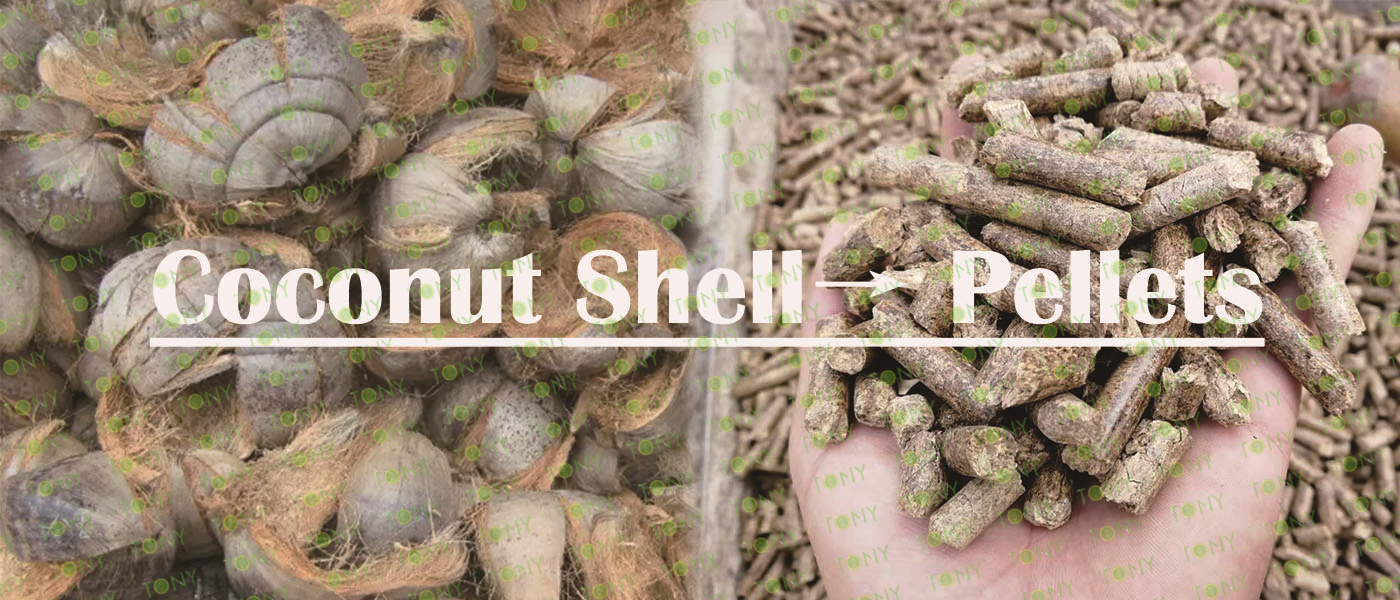

1.High Environmental Protection Value
Coconut shells are the main waste after coconut processing. The global coconut production is huge, and the number of coconut shells generated is also considerable. Making coconut shells into granules is an effective way to reuse this waste. For example, in major coconut-producing countries such as the Philippines and Indonesia, a large number of coconut shells were discarded in the past, causing environmental pressure. After being made into granules, it can reduce the negative impact of waste on the environment, such as reducing the burden on landfills and the odor caused by accumulation and decay.
In today's context of emphasizing sustainable development, the resource recycling of coconut shell granulation conforms to the concept of sustainable development and helps reduce the dependence on original resources and promote the relevant economic industries to develop in a more environmentally friendly and sustainable direction.
2.Excellent Physical Properties
The coconut shell itself has hardness and wear resistance, and these characteristics are still retained after being made into granules. For example, when used as an abrasive, coconut shell granules can effectively polish and treat the surface of objects. In the field of industrial cleaning, it can be used to clean the surfaces of materials such as metals and stones, and can remove dirt and rust without being easily worn and deformed.
During the production process of coconut shell granules, their shape and size can be adjusted according to specific needs, which is controllable. And this characteristic enables it to adapt to different uses. For example, making larger particles can be used in the drainage layer in gardening, while smaller particles can be used for fine filtration or as an adsorption material.
3.Stable Chemical Properties
Coconut shell granules have good corrosion resistance and can remain stable in some relatively harsh chemical environments. This makes it applicable in scenarios involving chemical substances. For example, in sewage treatment, it can be used as a filtration medium to filter sewage containing chemicals such as acids and alkalis without decomposing or losing its filtration function due to chemical reactions.
In addition, coconut shells are mainly composed of components such as cellulose and lignin, which are relatively safe and non-toxic. Therefore, when coconut shell granules are used in fields such as animal bedding and soil improvement, they will not cause harmful chemical effects on animals or plants.
4.Versatile And Widely Used
In gardening, coconut shell granules can be used as part of the planting medium to improve the air permeability and drainage of the soil. It can be mixed with soil, peat, etc. to provide a good growth environment for plant roots. For example, in the cultivation of flowers such as orchids that have high requirements for soil air permeability, coconut shell granules are an ideal additive. At the same time, coconut shell granules can also be used as a mulch to spread on the soil surface to maintain soil moisture and inhibit weed growth.
Coconut shell granules can be used as a raw material for biofuels in the energy field. Through processes such as pyrolysis, it can be converted into energy forms such as biochar and biogas, providing a renewable option for energy supply. Biochar can also be used for soil improvement, increasing the carbon content of the soil, improving soil fertility.
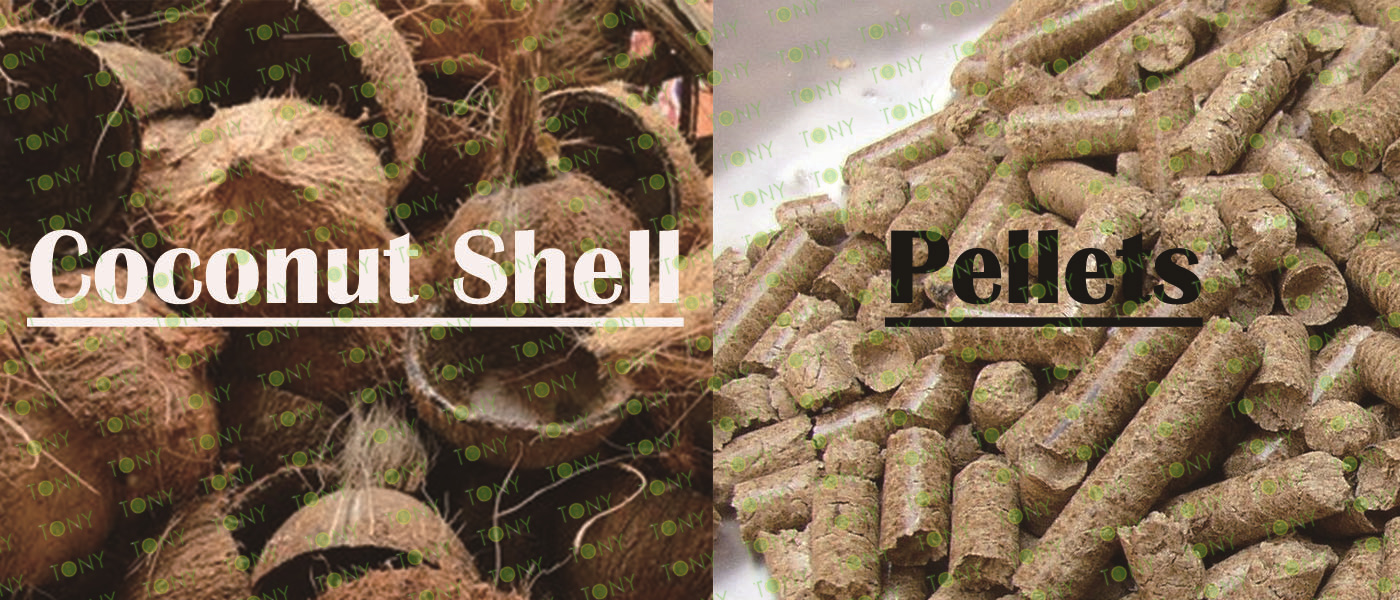
Some factors affecting the yield of Coconut Shell pellets:
1.The main factors affecting the yield of Coconut Shell pellets include raw material selection, raw material pretreatment, equipment configuration and ratio adjustment.
First of all, raw material selection is one of the key factors affecting the yield of Coconut Shell pellets. The type and quality of raw materials directly affect the ouTPCCut and quality of pellets. For example, when Coconut Shell is used as raw material, clean and impurity-free straw needs to be selected to ensure the density and molding effect of the particles1. In addition, the moisture content of the raw materials is also very important. Excessive moisture content will cause wall sticking during the granulation process and affect the ouTPCCut.
Secondly, raw material pretreatment is also an important factor affecting ouTPCCut. Impurities and moisture content in the raw materials will affect the molding effect and ouTPCCut of the particles. Through pre-treatment methods such as crushing and screening, impurities can be removed and the uniformity of raw materials can be improved, thereby increasing particle yield.
2.Equipment configuration is also an important aspect that affects ouTPCCut. The design and automation level of biomass pellet equipment directly affect production efficiency and ouTPCCut. Reasonable equipment configuration and advanced process flow can significantly improve production efficiency and particle quality.
3.Finally, proportion adjustment is also a key factor affecting ouTPCCut. During the production process, the ratio of raw materials needs to be continuously adjusted and optimized to ensure the best molding effect and ouTPCCut. For example, the proportions of raw materials such as Coconut Shell Chips and paddy husks need to be adjusted according to specific conditions to achieve optimal yield and quality.
By optimizing raw material selection, pretreatment, equipment configuration and ratio adjustment, the yield and quality of Coconut Shell pellets can be effectively improved.

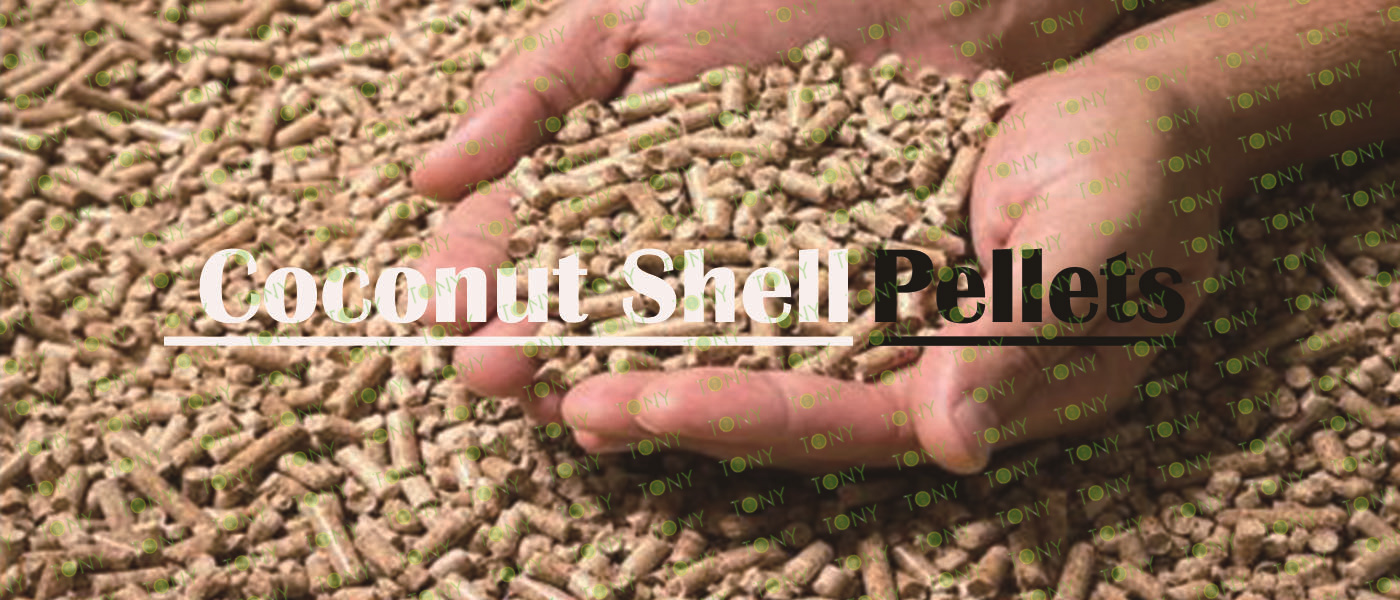
The following is the economic value of coconut shells made into particles:
Energy Production:
Biomass Fuel: Coconut shell particles have high calorific value and can be used as biomass fuel for power generation, heating, etc. Compared with traditional fossil fuels, it releases less greenhouse gases such as carbon dioxide during its combustion process and is more environmentally friendly. It is estimated that the heat generated by 1 ton of coconut shell pellet fuel is equivalent to the heat generated by 0.5-0.7 tons of standard coal, and the cost is relatively low, which can bring certain economic benefits to energy production enterprises and help reduce the impact on non-renewable Energy dependence promotes the diversification of energy structure.
Activated Carbon Production: Coconut shell is a high-quality raw material for making activated carbon. After a series of processing techniques, coconut shell activated carbon can be made into coconut shell activated carbon, which is widely used in drinking water purification, air purification, industrial wastewater treatment, food and beverage decolorization and other fields. Because of its developed pores, strong adsorption performance, high strength, and easy regeneration, coconut shell activated carbon has great market demand, relatively high price, and significant economic value.
Agricultural Applications:
Soil Conditioner: The ash after burning coconut shell particles is rich in potassium, calcium, magnesium and other mineral elements. It can be applied to farmland as a natural soil conditioner, which can improve the soil structure, increase soil fertility, and increase the yield and quality of crops , reduce dependence on chemical fertilizers, reduce agricultural production costs, and have certain economic and ecological benefits.
Animal Feed Additive: Coconut shell pellets can be added to animal feed after proper processing. Its rich content of cellulose and other ingredients can help promote the digestion and absorption of animals, improve the immunity and production performance of animals, reduce feed costs to a certain extent, and improve the economic benefits of breeding.


1.High Environmental Protection Value.
The global coconut production is large. Making coconut shells into granules can effectively utilize waste, reduce landfill and the odor caused by accumulation and decay, which is in line with the concept of sustainable development.
2.Excellent Physical Properties.
It retains the hardness and wear resistance of coconut shells and can be used as an abrasive. The shape and size are controllable and can meet different uses. For example, large particles are used for gardening drainage, and small particles are used for filtration or adsorption.
3.Stable Chemical Properties.
It has strong corrosion resistance and can be used in sewage treatment and other scenarios in harsh chemical environments. The main components are safe and non-toxic, and there is no harm when used in fields such as animal bedding and soil improvement.
4.Versatile And Widely Used.
In gardening, it can improve soil air permeability and drainage and be used as a mulch. In the energy field, it can be used as a raw material for biofuels. Biochar can also improve the soil. It has excellent adsorption and filtration performance. In industry, it can be used as a filling material to enhance product performance.

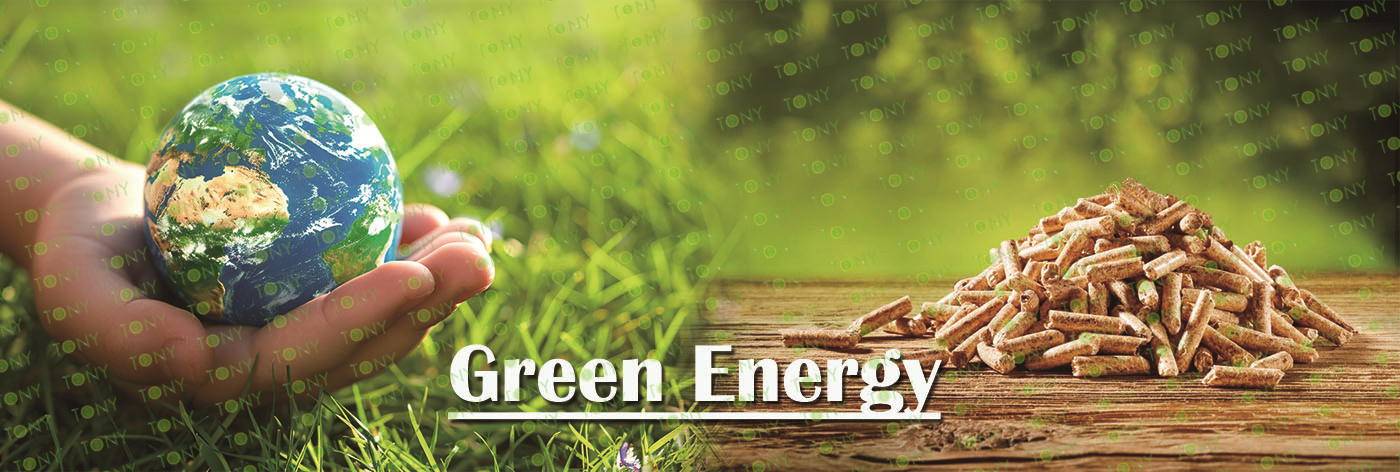
The market prospect of making particles from coconut shells has certain potential, which is mainly reflected in the following aspects:
1. Fuel Field:
Advantages: Coconut shell particles, as biomass fuel, have the characteristics of high calorific value and low pollution. Compared with traditional fossil fuels such as coal, they produce less pollutants such as sulfur oxides and nitrogen oxides during combustion, meeting environmental protection requirements and being valued and promoted by more and more countries and regions for environmental protection energy. For example, in some cities with high environmental protection requirements, biomass pellet fuel is gradually replacing coal in fields such as industrial boilers and civil boilers, and market demand is continuously increasing.
Moreover, with the continuous increase in global demand for renewable energy, the market scale of biomass fuel continues to expand. As a kind of biomass fuel, coconut shell particles have the advantage of raw material supply in some areas rich in coconuts, such as Southeast Asia and Hainan, and can meet the demand for biomass fuel in local and surrounding areas.
2. Water Treatment And Air Purification Field:
Coconut shell is a high-quality adsorbent. The granular activated carbon made from it performs excellently in water treatment and air purification. Coconut shell has a developed pore structure and high specific surface area, and can effectively adsorb pollutants such as organic matter, heavy metal ions, pigments in water, and harmful gases and odors in the air. As people's requirements for water quality and air quality continue to increase, the market for water treatment and air purification continues to grow. As an efficient and environmentally friendly adsorbent, coconut shell granular activated carbon has broad market prospects in these fields. For example, in urban drinking water treatment plants, industrial sewage treatment plants, indoor air purifiers and other equipment, the demand for coconut shell granular activated carbon is continuously increasing.
3. Agriculture And Horticulture Field:
As a soil amendment, coconut shell particles can improve soil structure and increase soil permeability and water retention. Because it contains rich organic matter and trace elements, it can provide nutrients for plant growth and promote the growth and development of plants. In agricultural production, it can be used to improve farmland soil and increase the yield and quality of crops.
Cultivation substrate: In the field of horticulture, coconut shell particles can be used as a cultivation substrate for soilless cultivation of plants such as flowers, vegetables, and melons. It has good air permeability and water retention, can provide a good growth environment for plant roots, and can be reused to reduce cultivation costs.
4. Building And Decoration Material Field:
Coconut shell particles can be mixed with other materials to make environmentally friendly building panels such as fiberboard and particleboard. These panels have the advantages of high strength, light weight, and environmental protection, and can replace traditional wood panels and be used in fields such as building decoration and furniture manufacturing.
Decoration materials: Coconut shell particles can also be used to make decoration materials such as decorative lines and decorative panels. Its unique texture and color can add a natural and simple style to interior decoration and is loved by some consumers.

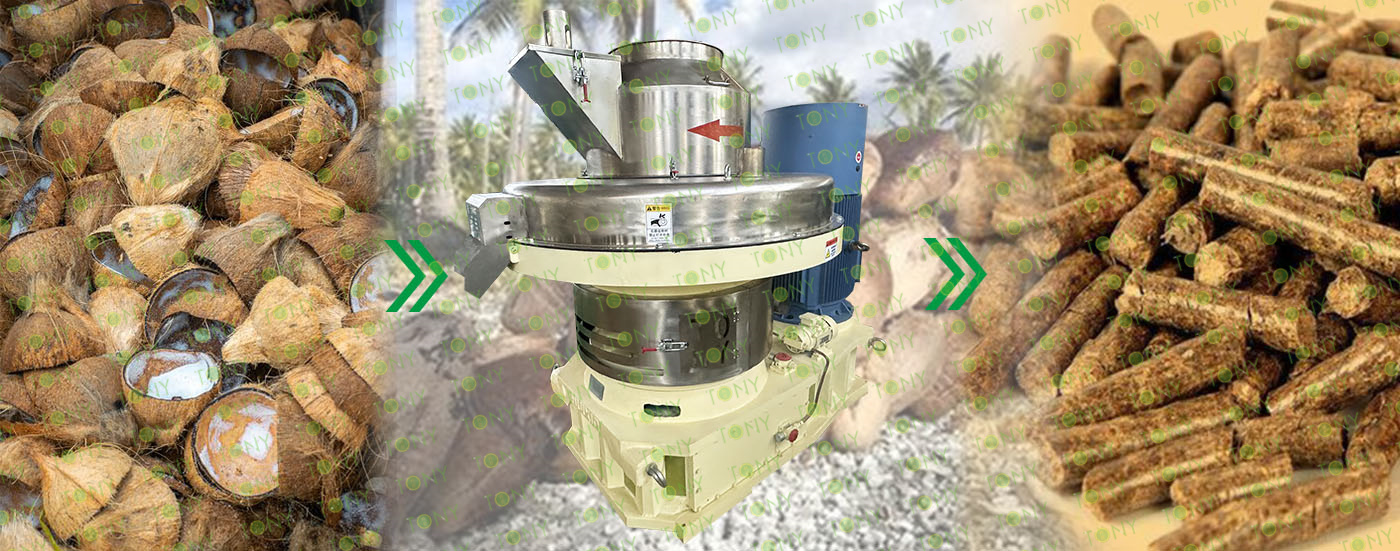
Working Principle Of Coconut Shell Biomass Pellet Processing Equipment:
1. Raw Material Pretreatment
First of all, the collected coconut shells need to be cleaned to remove surface impurities such as soil, sand, and residual coconut meat. This is because these impurities may affect the quality and performance of the particles.
Then, the cleaned coconut shells are dried, usually by natural drying or using special drying equipment. The appropriate degree of drying is very important because coconut shells with excessive moisture content may cause difficulties in particle formation during subsequent processing and are prone to mildew and deterioration.
After drying, the coconut shells may also need to be crushed and broken into smaller pieces. This is to facilitate the subsequent particle formation operation so that the coconut shells can be better extruded into uniform particle shapes.
2. Particle Formation Principle (Taking Biomass Fuel Particles As An Example)
The pretreated coconut shell fragments are fed into a pelletizer. Inside the pelletizer, there is a pressure roller and an annular mold. Under high pressure, the coconut shell fragments are squeezed into the small holes of the annular mold under the pressure of the pressure roller.
When the coconut shell fragments pass through the mold holes, due to the extrusion and friction of the mold, the fiber structures between the coconut shell fragments interweave and bond tightly together, gradually forming elongated particles. These particles are cut off at the outlet of the mold to form harder coconut shell particles with a certain length and diameter.

TONY Brand 24-27Ton/Hour Coconut Shell pellet manufacturing plant can process Coconut Shell ,stlak,It is widely used in poultry feed, cattle, sheep and horse feed. It can also replace coal for burning.
1.Capacity: 24-27Ton/Hour
2.Raw materials: Rice Husk,Peanut Shell,Sunflower Husk,Coffee Husk,Hazelnut Husk,Walnut Shell,Coconut Shell etc.
3.Moisture: About 40-55%.
4.Application: Manure compost and animal feed.
5.Finisheh pellets Markets:Feed, fertilizer and fuel fields.

1.Project Name: Coconut Shell Pellet Line
2.Raw Materisl: Coconut Shell
3.Moisture Of Raw Material: 40-55%
4.Capacity: 24-27Ton/Hour
5.Process: 1.Grinding Process→2.Fine Crushing Process→3.Drying process→4.Sawdust Storage process→5.Pelleting Process→6.Cooling Process→7.Packing Process→8.Automatic stacking Process
6.Main Machine:Comrehensive chipper, Hammer Mill,Rotary Drum Dryer,.Sawdust Storage ,TONY Pellet MachineTYJ860-III-250KW,Pellets Cooler,Packing Machine, Palletizer And Belt Conveyors.
7.Total Power: About 2234KW
8.Need Area: About 2400-3000m㎡
9.Project Country: Indonesia
10.Voltage: 220V,50HZ


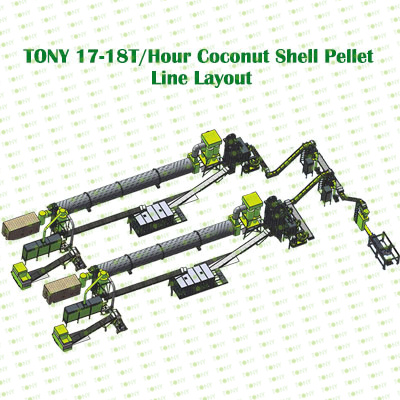 |
Project Layout For Customer |
|
1.Product: Coconut Shell Pellets Line 2.Capacity: 24-27T/Hour 3.TONY Brand 24-27Ton/Hour Coconut Shell Pellet Line Project Process 4:Main Machine: Comprehensive chipper, Hammer Mill,Rotary Drum Dryer,.Sawdust Storage ,TONY Pellet MachineTYJ860-III-250KW,Pellets Cooler,Packing Machine ,Palletizer And Belt Conveyors. 5.Total Power: About 2234KW 6.Need Area: About 2400-3000m㎡ 7.Country: Indonesia |


|
How to use TONY pellet line to proceed from Coconut Shell into pellets? It mainly contains the following steps and machines as following: 1.To Use TONY Comprehensive chipper To Grind Coconut Shell With Width 20CM Into 30-40mm Chips. 2.To Use TONY Hammer Mill To Crush 30-40mm Chips Into 8-14mm Sawdust. 3.To Use TONY Single Layer Rotary Drum Dryer To Dry The 45-55% Wet Coconut Sawdust Into 10-15% Coconut Sawdust. 4.To Use TONY Sawdust Storage To Storage, uniform material. 5.To Use TONY Vertical Ring Die Pellet Machine To Products Pellets With φ24-27mm. 6.To Use TONY Galvanized Cooler To Cool Pellets From 80-90℃ to 20-30℃. 7.To Use TONY Fully Auto-Matic Packing Machine To Packing Pellets To 15-50KG/Bags. 8.To Use TONY Column Palletizer To Arrange the bags on the pallet in a certain order. You can contact TONY to get for more details information and quotation. |
|
||||||||||||||||||||||||||||||||||||||||||||||||||||||||||||



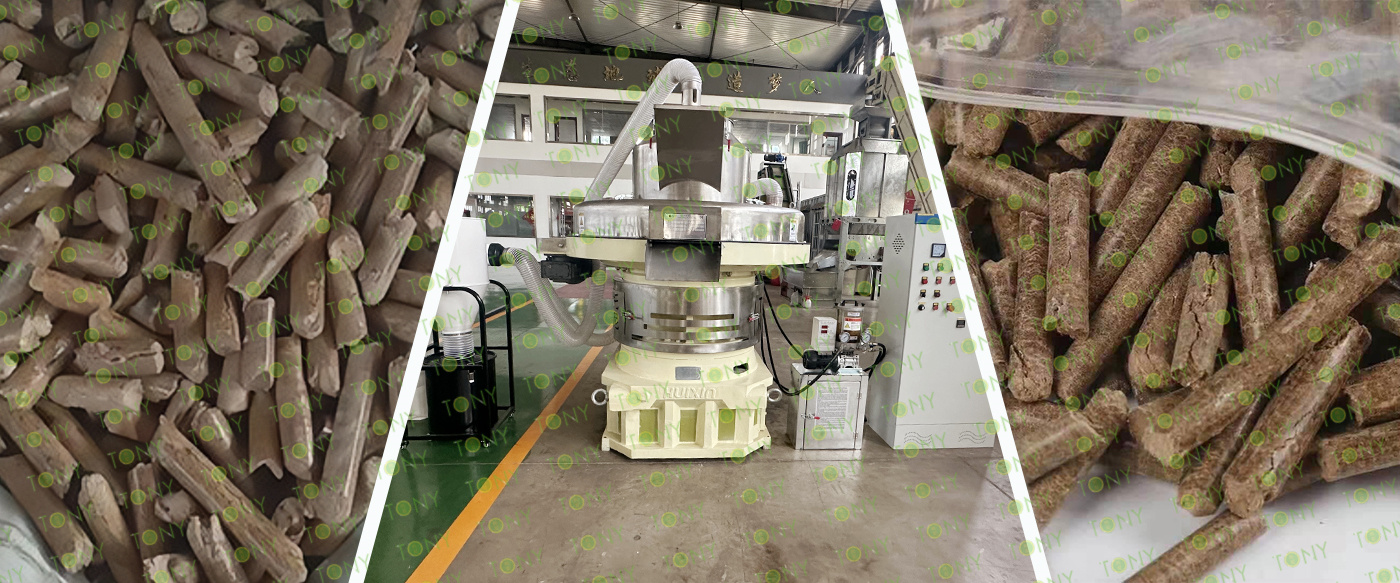
Following TONY Will Introduce For You For All The Necessary Machinery That Will Be Used For The Whole Pellet Production Line. Some machines Can Be Custom Made By Customer According To Different Customer's Detailed Demand.Contact TONY For More Details With Quotation And Layout.
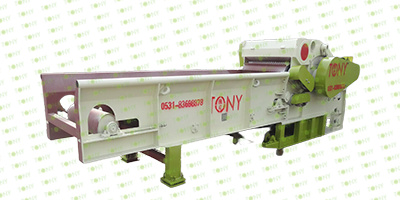 |
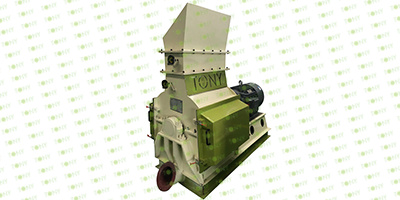 |
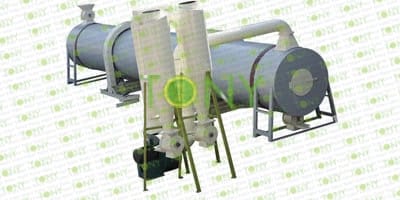 |
 |
|
Comprehensive Chipper |
Hammer Mill |
Drum Dryer |
Sawdust Storage |
|
1.To Grind Coconut Shell Into 30-40mm Coconut Shell Chips. 2.Model:TPCC1400-700*2sets. 3.Capacity:15-27Ton/Hour. |
1.Crush 30-40mm Chips Into 8-14mm Sawdust. 2.Model:TFD-75-250KW *3Sets 3.Capacity:24-27Ton/Hour/Set Total Capacity:24-27Ton/Hour/Set |
1.To Dry The 45-55% Coconut Shell Chips Into 10-15% Coconut Shell Chips. 2.Model:THGD3.5*24*2set. 3.Total Power With Belt Conveyor:58KW. 4.Capacity:12-14Ton/Hour/set. |
1.To Storage 8-14mm Sawdust With Galvanized 2.Model:TYC120 3.Size:8*2.58*4.58m 4.Size And Cube Can Be Custom-Made |
 |
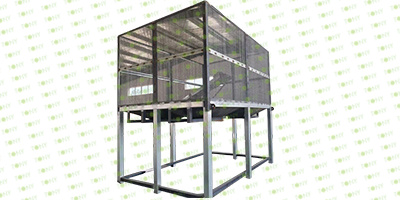 |
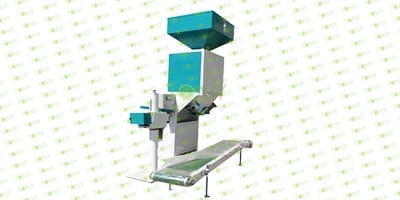 |
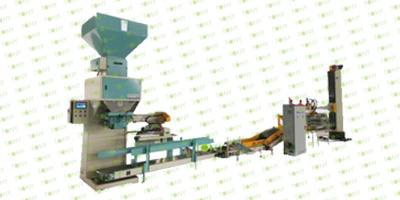 |
|
Vertical Ring Die Sawdust Pellet Machine |
Cooler Separator |
Fully Automatic Packing Machine |
Column Palletizer |
|
1.Model:TYJ860-III-250KW*6Sets 2.Capacity:3.5-4.5Ton/Hour/Set 3.Total Capacity:24-27Ton/Hour |
1.To Cool Pellets From 80-90℃ to 20-30℃ 2.Model:TCN-10*2Sets 3.Capacity:24-27Ton/Hour |
1.Packing Pellets To 15-50kg/Bags. 2.Model:TQBF 3.Capacity:24-27Ton/Hour |
1.Arrange the bags on the pallet in a certain order. 2.Capacity:Designed With The Whole Line |

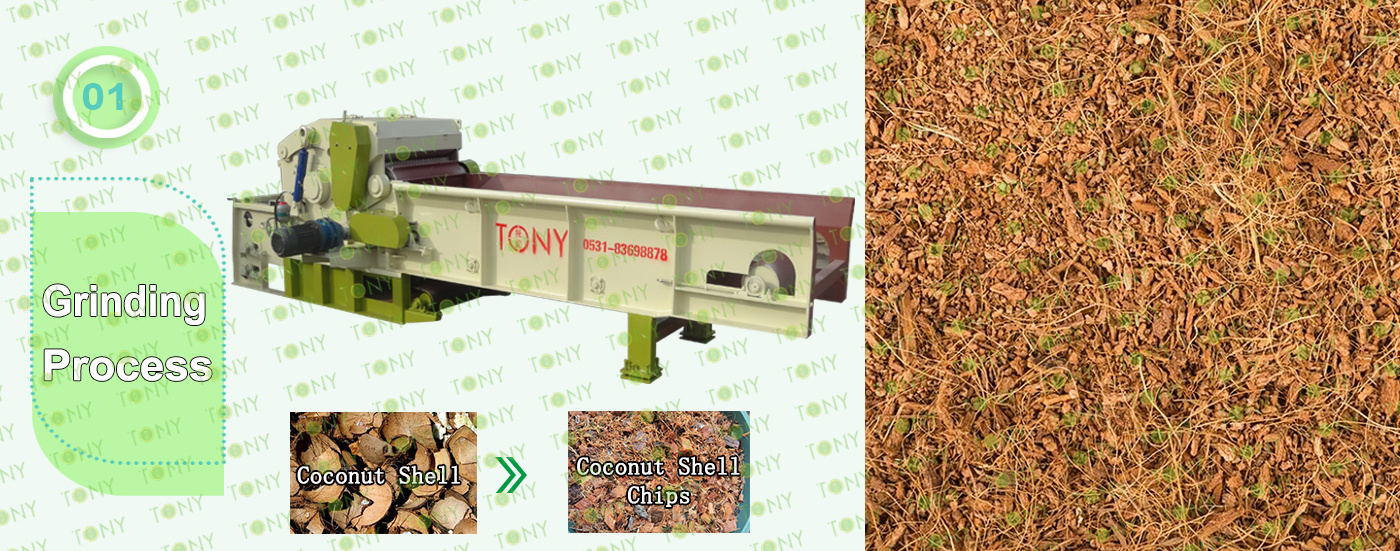
|
1.Chipping Process: A . This process is mainly used to grind the coconut shell into coconut shell chips with size 25-35mm. The finish coconut shell chips size can be adjustable by changing different sizes of screeners and adding flying knives inside the comprehensive chipper. B. This customer use TONY Brand TPCC1400-700-200kw : Main Parts: (1). TONY's new Comprehensive Chipper. (2). Feed and unload belt frequency control to prevent card material (3). Hydraulic system control for more thickness of raw materials (4). Electronic control system allows the equipment to be used normally (5). Contact TONY for more details with quotation. |
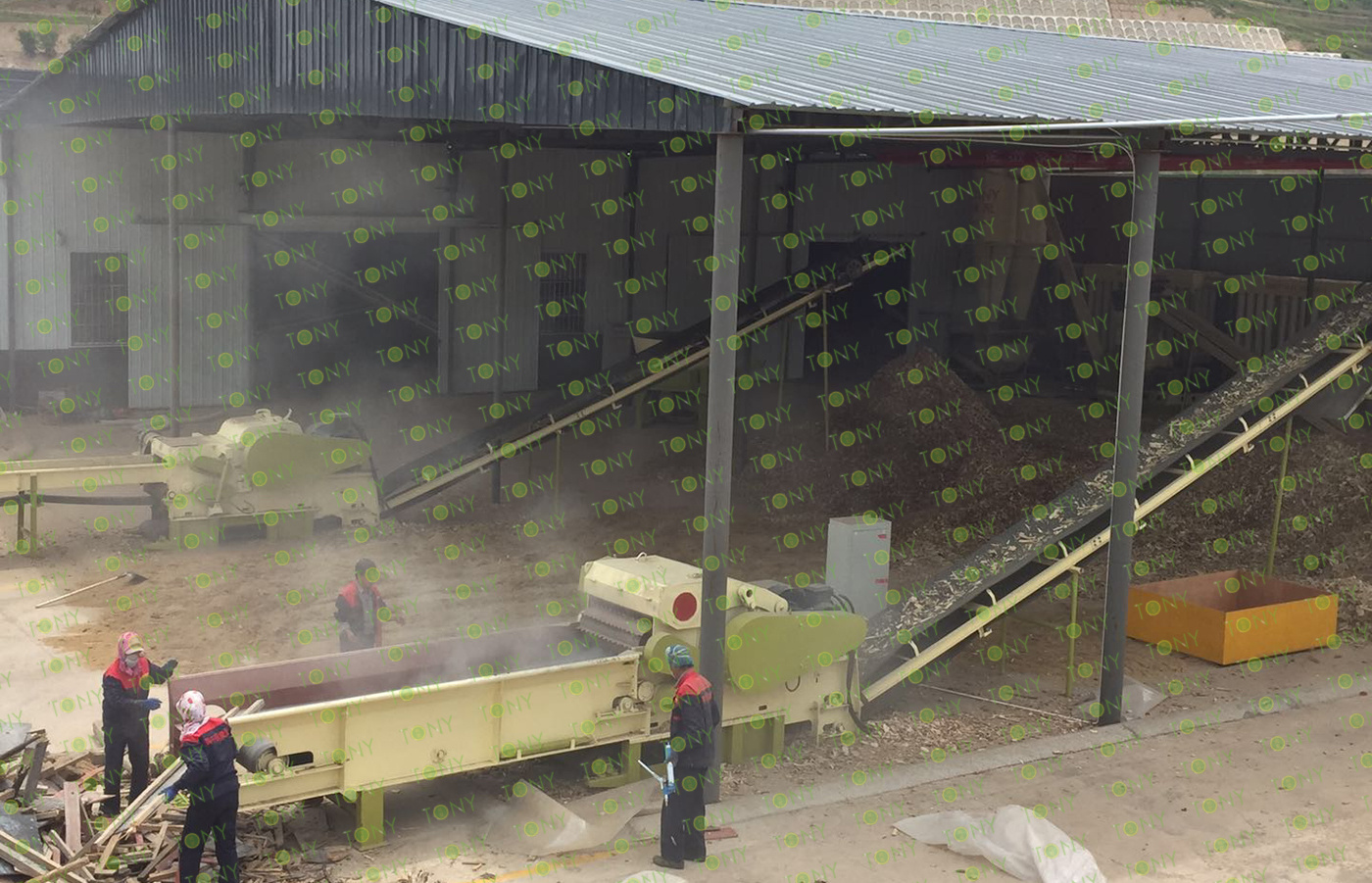

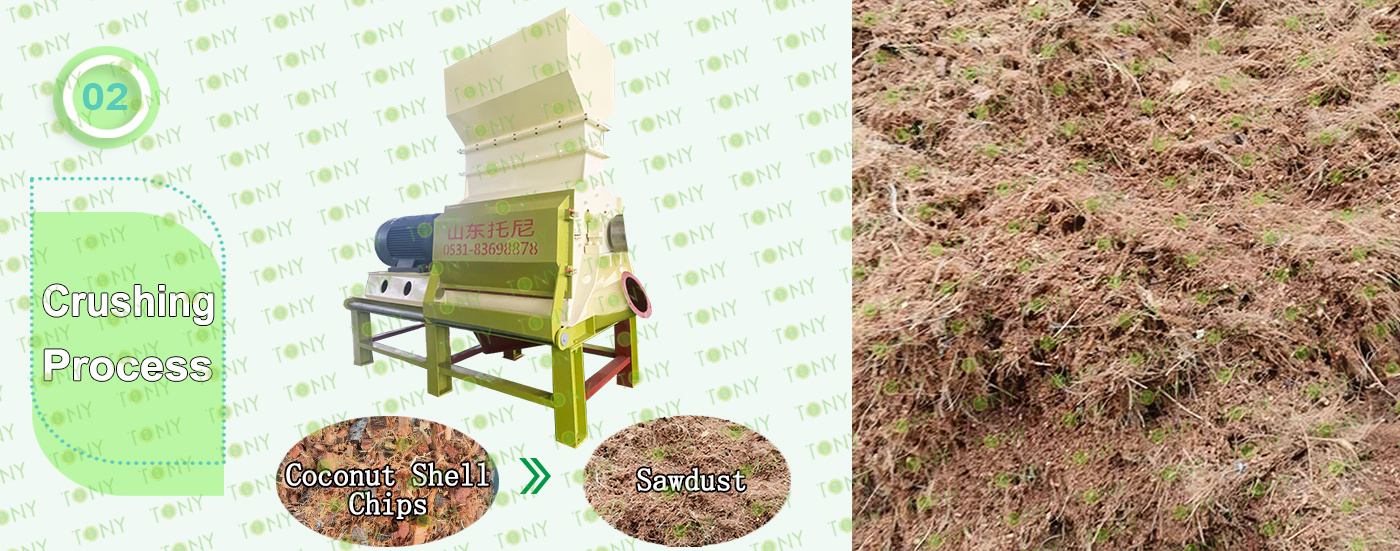
|
2.Coconut Shell Chips Fine Crushing Process: A. This process is mainly used to crush 30-40mm coconut shell chips into 8-14mm sawdust. B. Capacity:24-27Ton/Hour. C. TONY use high effective Hammer Mill TFD75-250KW-3Sets for this process. Main Parts: (1). TONY High Effective Hammer Mill. (2). 90 Holes Galvanized Dust Collector. (3). Sawdust Transportation Fan Blower. (4). Cyclone With Airlock. (5). Electrical Cabinets. |
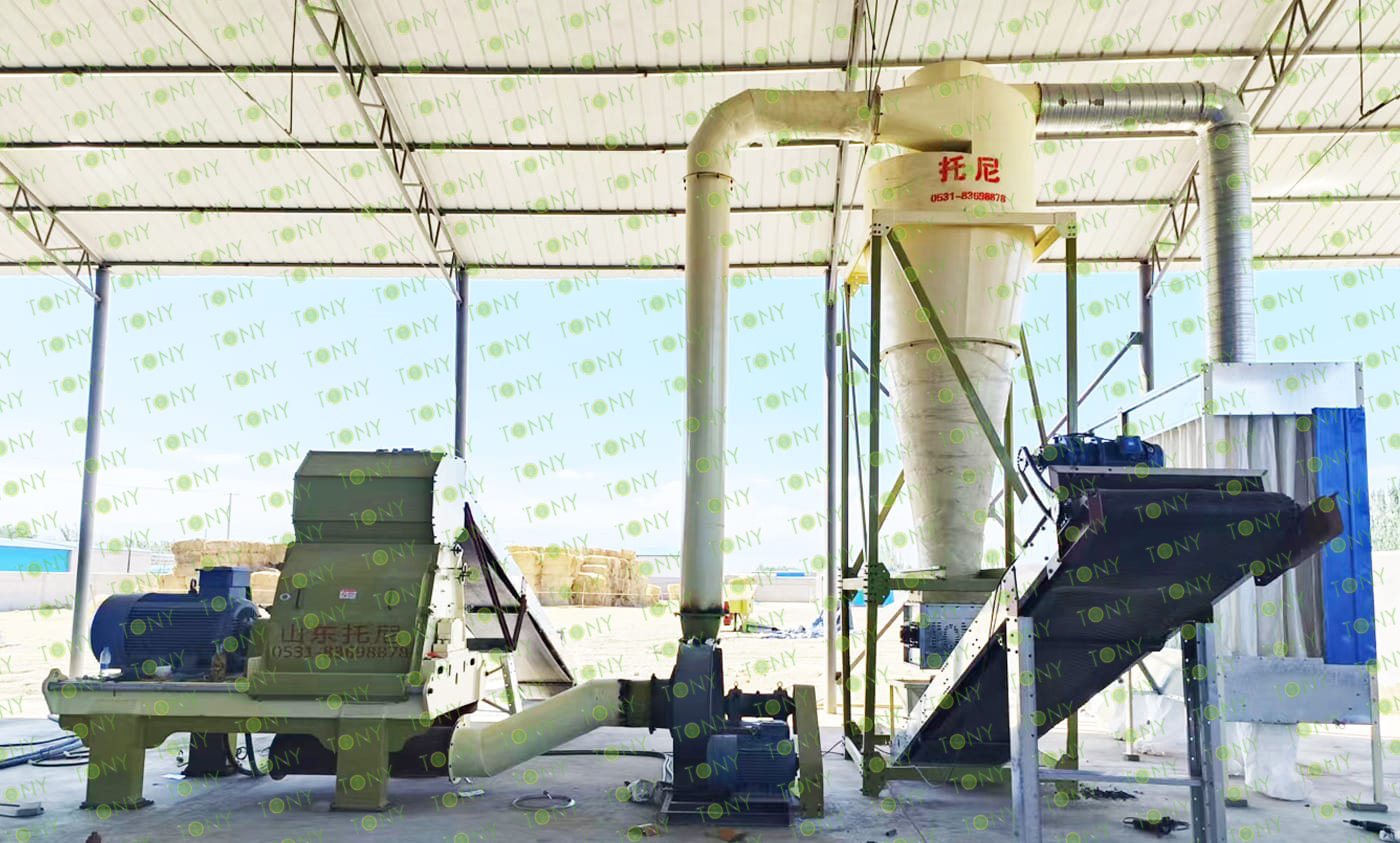

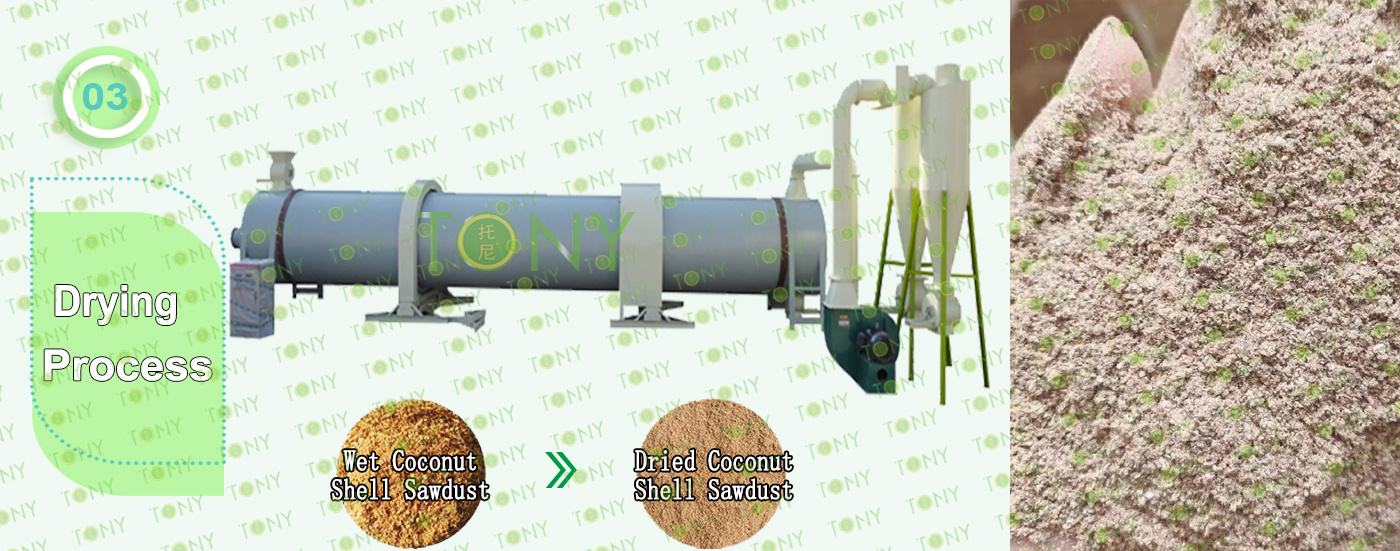
|
3.Sawdust Drying Process: A. This process is mainly used to dry the sawdust from 40-45% to 10-15%. B. Capacity:10-15Ton/Hour Per Set.This Production Line is 24-27Ton/Hour. C. TONY use 2sets of 3.5*24m single layer rotary drum dryer for this process,this customer use biomass waste Beet Straw as buring raw material with hot stove 7*3*3m.TONY hot blast stove is made of firebrick pan, shell with H steel plate as the frame. There are 3 layers of fire blocking device inside, which can effectively prevent the fire from entering the tumble dryer. TONY Dryer use spiral tube material, which has higher heart rate and is not easy to deform. Unlike other manufacturers with iron plate splicing welding, very easy to deformation. Main Parts: (1). TONY's Rotary Drum Dryer Main Body.(Reducers With Motors and Pips.) (2). TONY's Hot Stove. (3). Fan Blower+Cyclone With Airlock. |
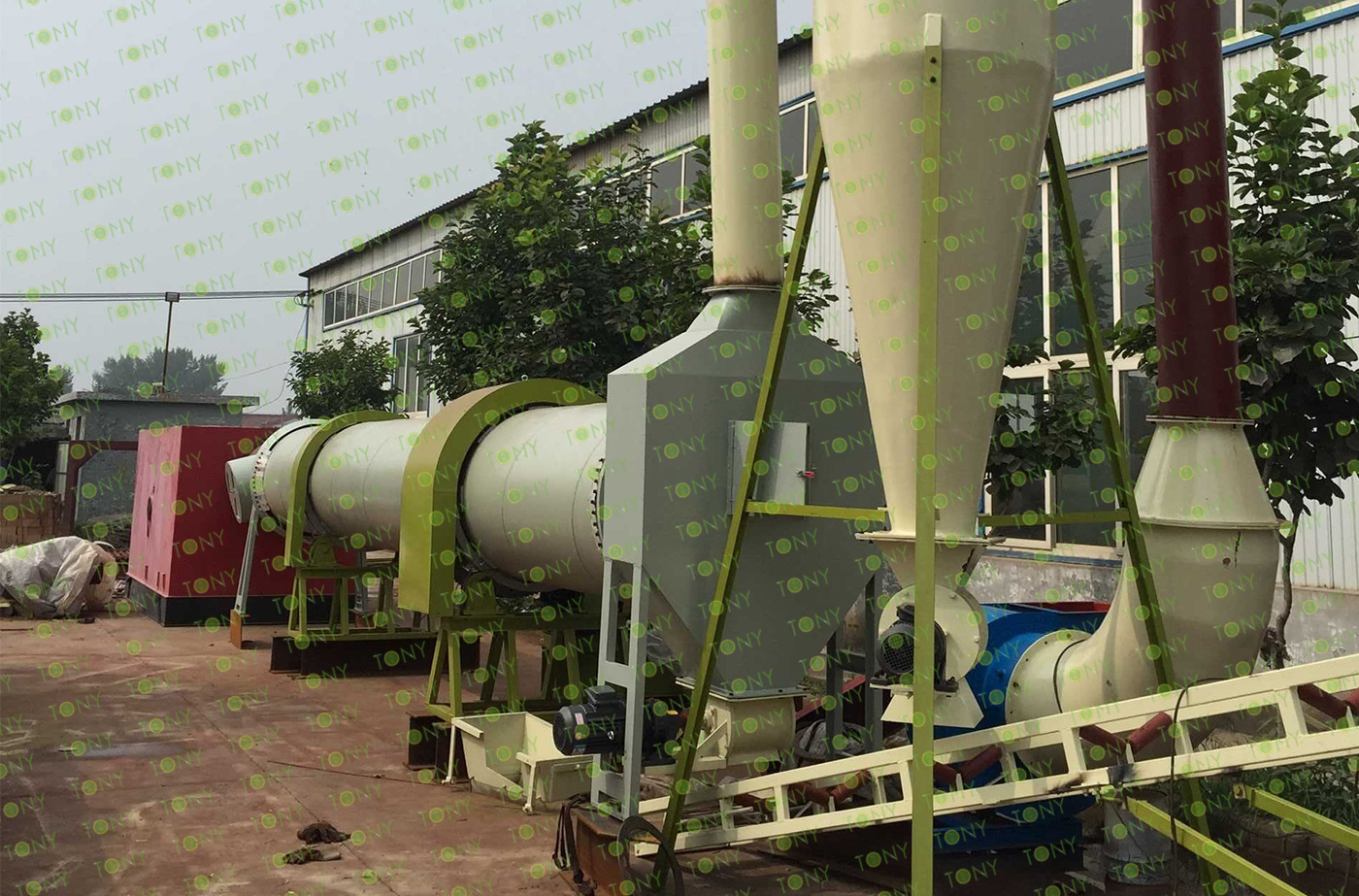

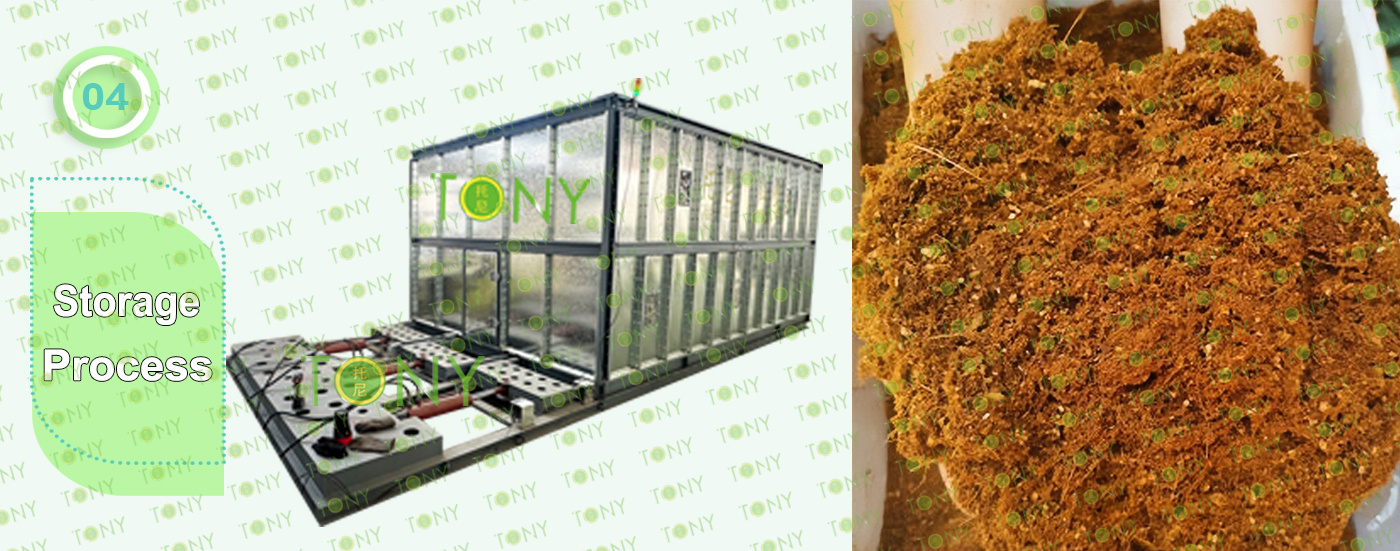
4.Sawdust Storage Process:
A.This process is mainly used to storage the Sawdust that comes out of the hammer mill.It is Hydraulic galvanized storage bin which is more stalbe and sawdust in it is not easy to be blocked.
B.The customer choose one TONY Brand Sawdust Storage to storage the sawdust that comes out of the Hammer Mill.This process can be optional by customer.If customer do not choose the storage bin,he can storage the sawdust on the ground directly which may need some labour.
Main Parts:
(1).TONY's new Sawdust Storage Bin.
(2).With screws inside the Storage Bin to prevent comprehensive chips blocked.


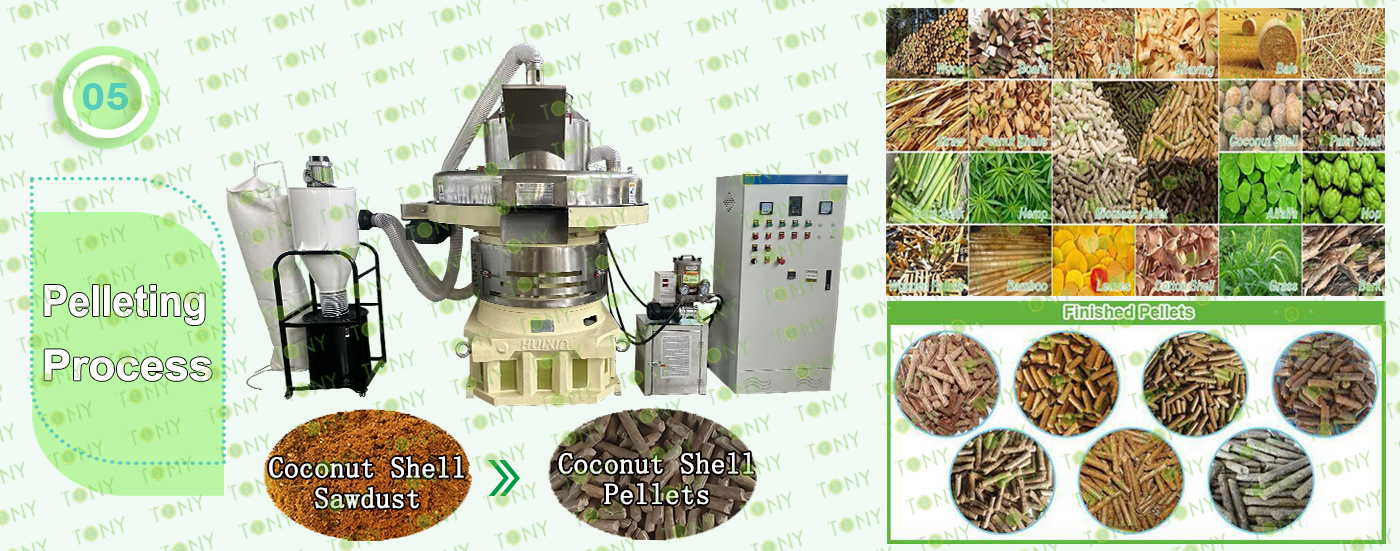
|
5.Pelleting Process: A.This process is mainly used to product pellets with φ24-27mm. B.Capacity:24-27Ton/Hour. C.The customer chooses 6 sets of TONY Brand Vertical Ring Die Pellet Machine TYJ860-III-250KW With Capacity 3.5-4.5Ton/Hour. Main Parts: (1). TONY's new Vertical Ring Die Pellet Machine. (2). Cyclone And Bags Dust Collectors. (3). Bearings Automatic Lubrication System. (4). Electrical Cabinets. You can choose TONY new type SS304 pellet machine or old type MS pellet machine. |
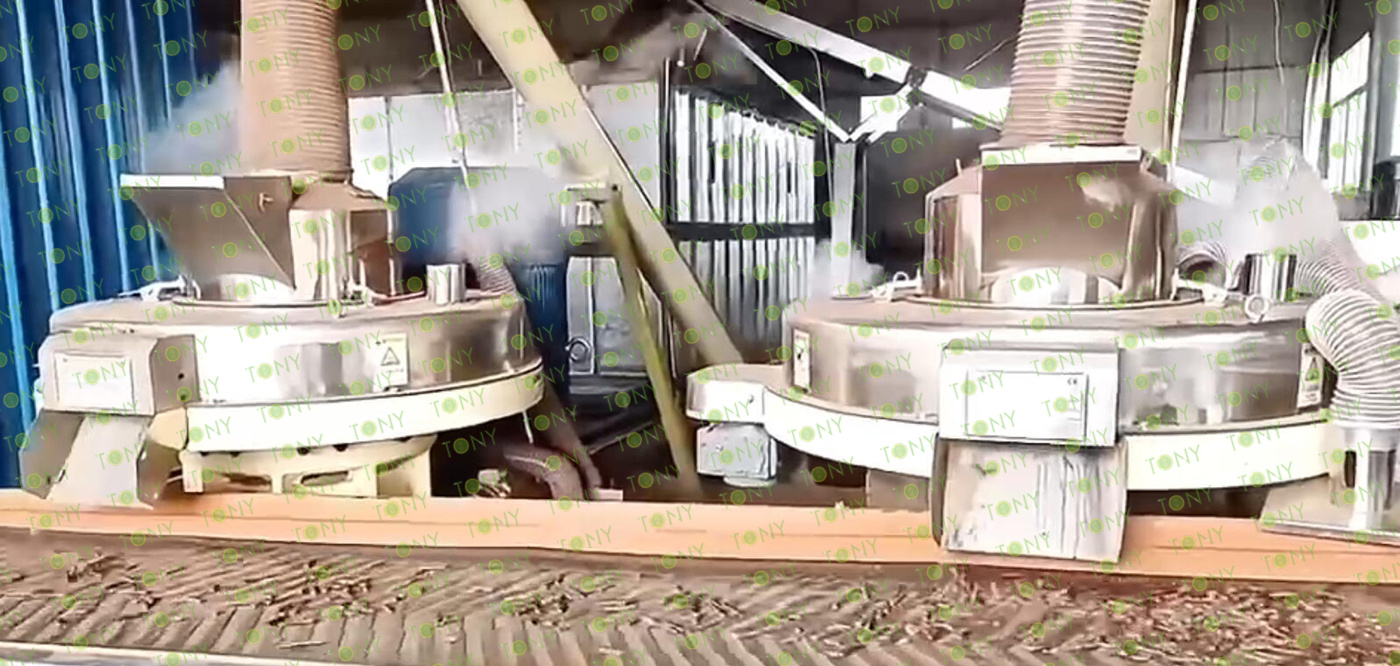

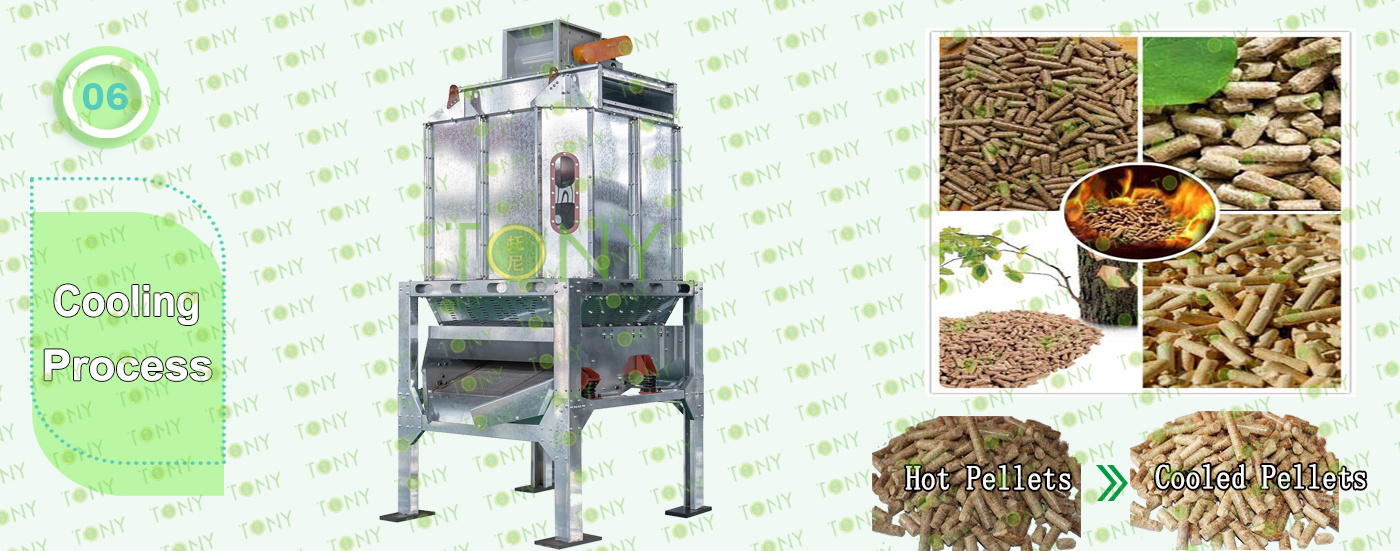
6.Cooling Process:
A.This process is mainly used to cool pellets from 80-90℃ to 20-30℃
B.The customer chooses 2 sets of TONY Galvanized Cooler Separator With Capacity 24-27Ton/Hour.
Main Parts:
(1). TONY's new Galvanized Cooler Separator With Vibrating Screen.
(2). Cyclone And Bags Dust Collectors.
(3). Fan Blower.
(4). Connect Pipes.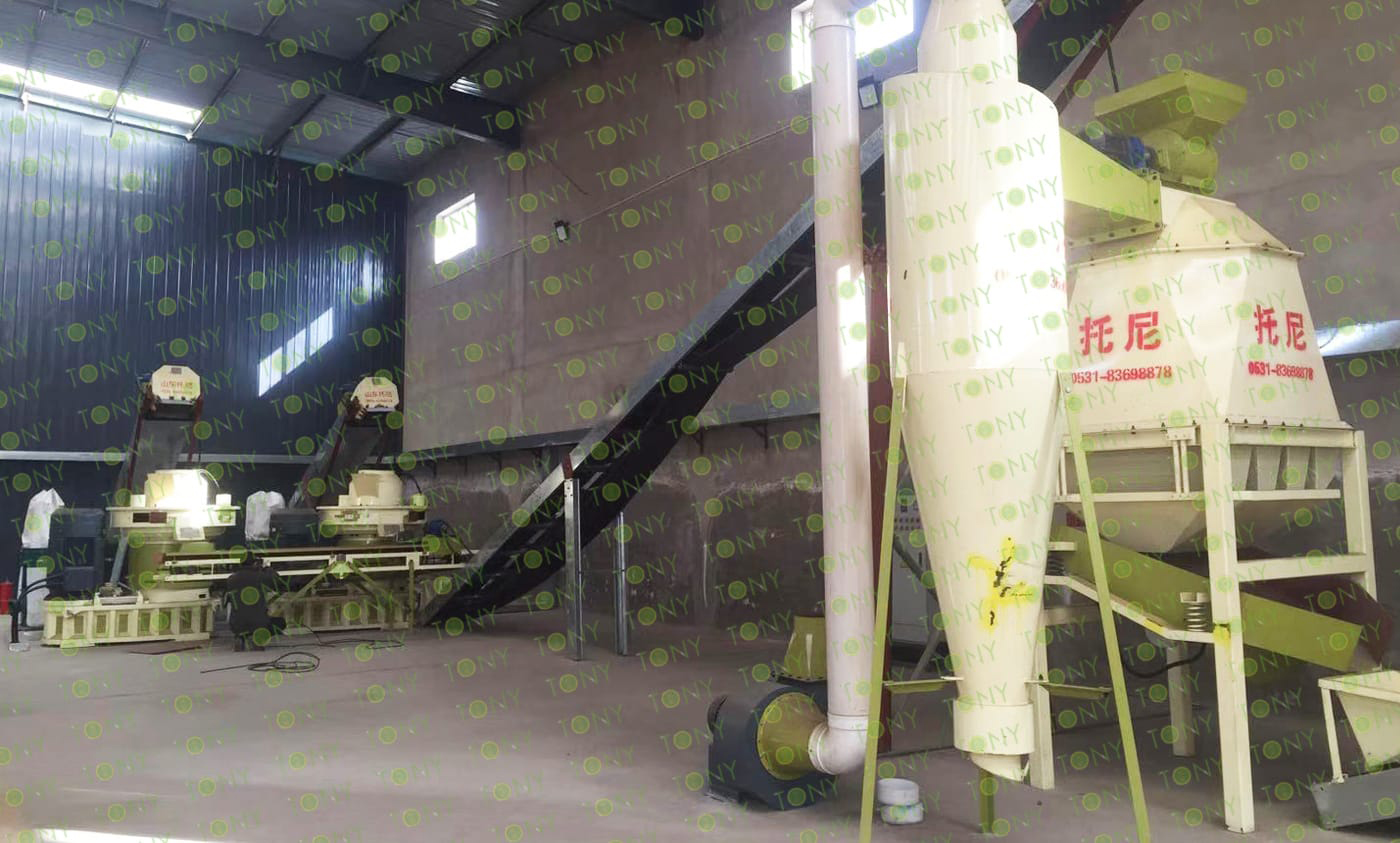

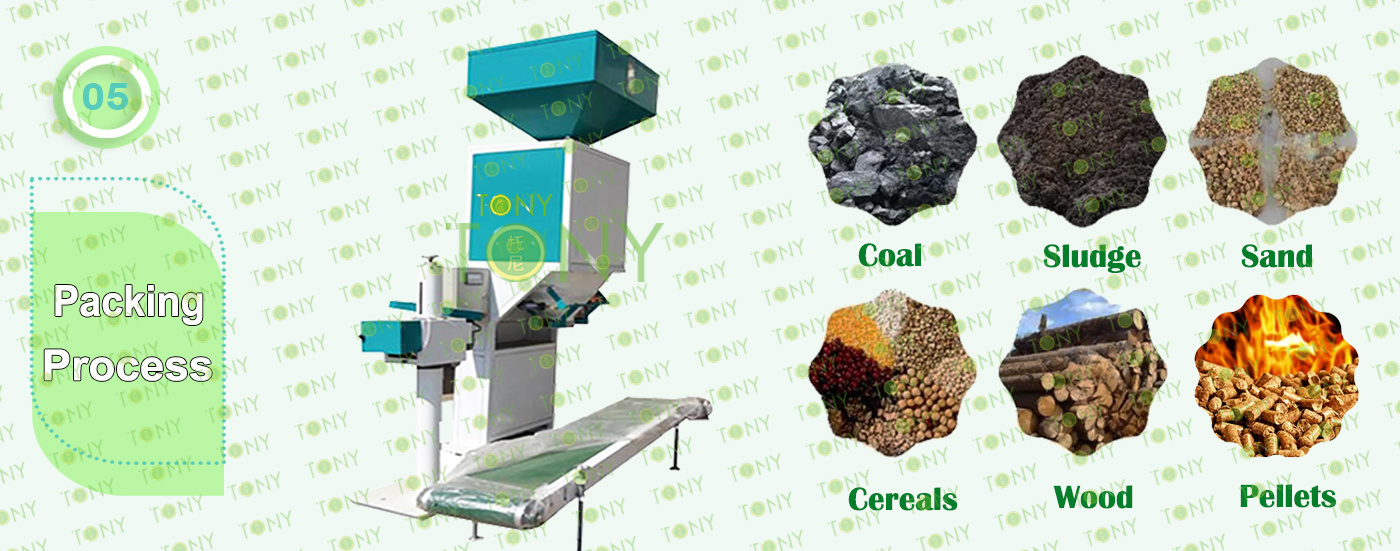
7.Packing Process:
A. This process is mainly used to pack pellets to 15-30kgTon/Bags.
B. The customer chooses 1 set of TONY Fully-Automatic Packing Machine With 24-27Ton/Hour.
Main Parts:
(1). TONY's new TONY Fully Automatic Packing Machine.
(2). Sew Machine,Buyer Can Also Choose Hot Seal Machine For Chosen.
(3). Bags Transportation Conveyors.
(4). Feeding Inlet Silo With 1㎥.
(5). Electrical Cabinets.
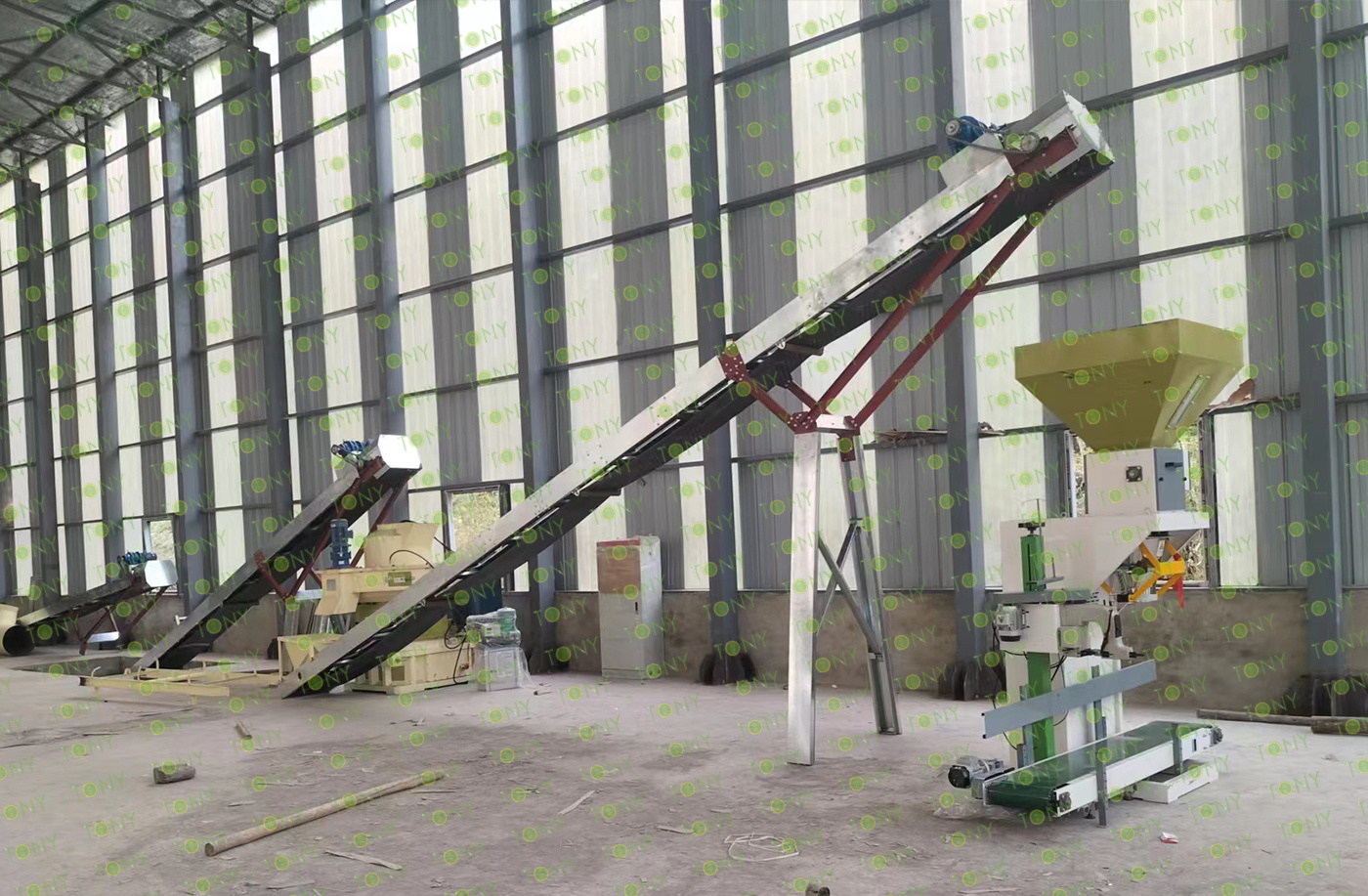

TONY Detailed Design 3D Layout With Detailed Size For 10-12Ton/Hour Palm Nut Pellet Line According To Cusomer Factor Size
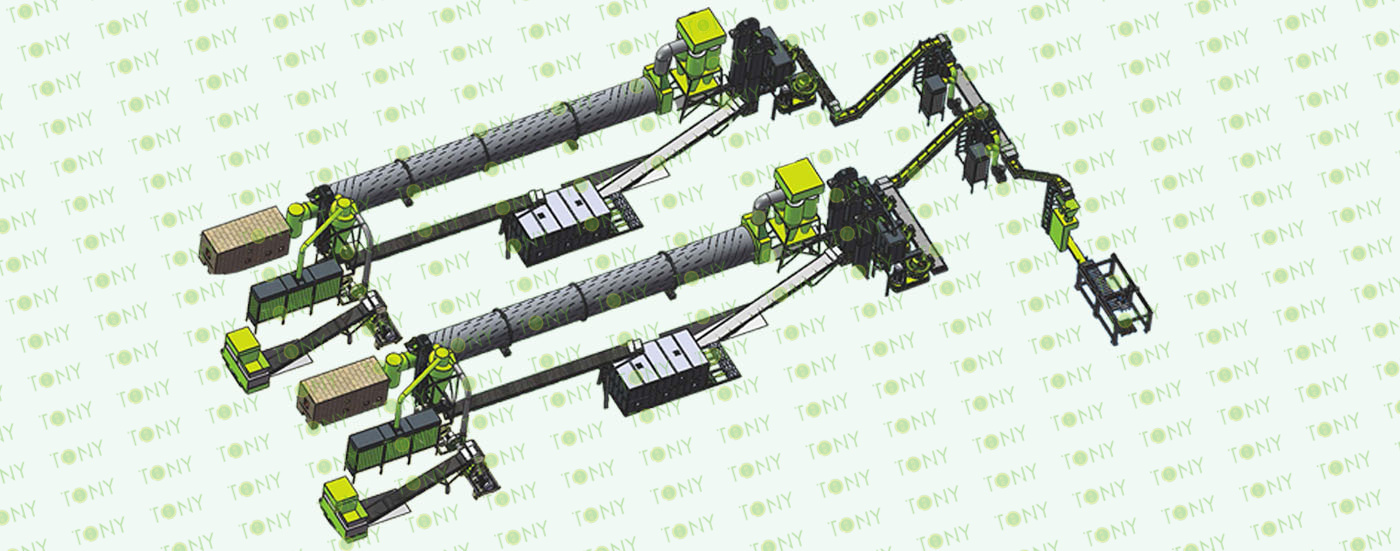

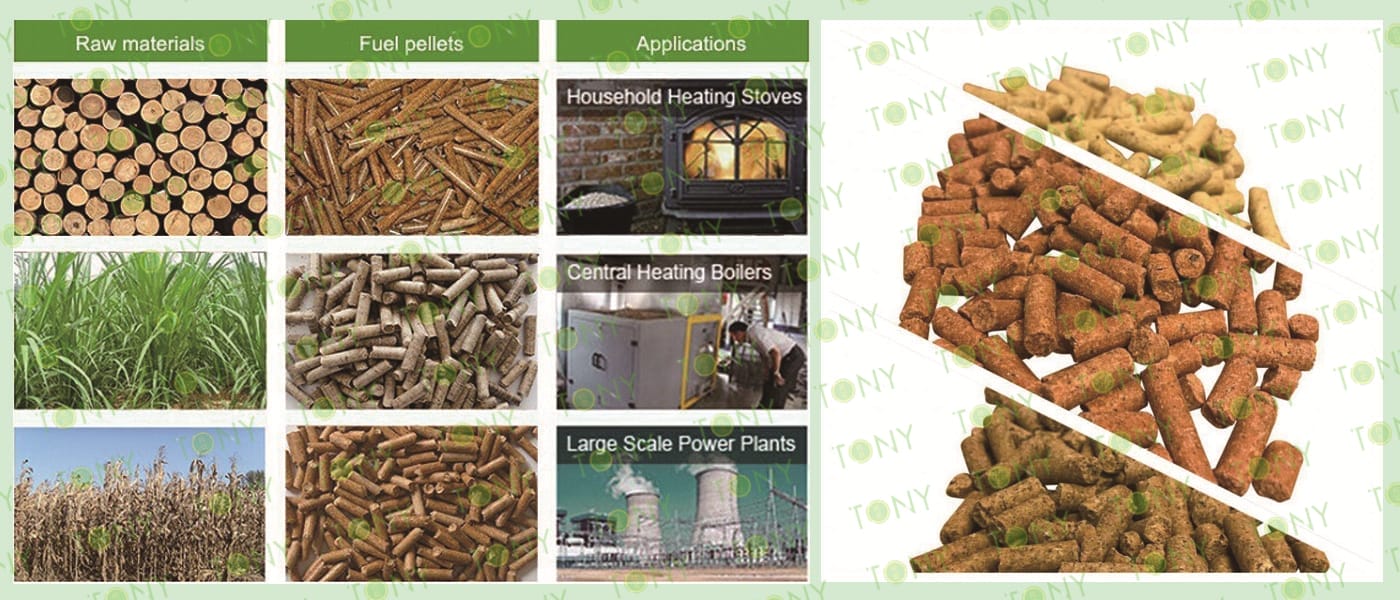
Abundant Raw Materials And Low Cost
As a common tropical fruit, coconut has a huge output worldwide. As a byproduct, coconut shell has a wide and sufficient source, which can ensure the supply of raw materials for large-scale production.
Under normal circumstances, coconut shell is a waste in the coconut processing industry. Recycling it into particles and turning waste into treasure has a relatively low cost, which can effectively reduce production costs and improve economic benefits.
Good Physical Properties
High Hardness: The coconut shell itself has a hard texture, and the particles made have high hardness and wear resistance. It is not easy to break or deform during use, and can maintain a good particle shape. For example, when used as cat litter, it can effectively avoid excessive dust caused by particle crushing and maintain the good performance of cat litter.
Moderate Density: Its density is neither too large to cause excessive weight, nor too small to affect the use effect. In applications such as filling materials and adsorption materials, it can ensure performance while being easy to operate and transport.
Chemical Composition Advantages
High Cellulose Content: Coconut shells are rich in cellulose, with a content of up to about 53.06%, which makes the pellets have good stability and toughness and can be used to produce a variety of products. For example, when making composite materials, it can enhance the strength and durability of the material.
High Lignin Content: The lignin content is about 36.51%. Lignin has strong adhesion, which helps to improve the molding effect and strength of the pellets, making the pellets more solid and not easy to loosen.
Significant Environmental Protection Characteristics
Renewable Resources: Coconut shells are natural renewable resources with a relatively short growth cycle and can be continuously supplied for production. The use of coconut shell pellets helps to reduce dependence on non-renewable resources, meets the requirements of sustainable development, and is more environmentally friendly.
Degradability: Coconut shell pellets can be gradually degraded in the natural environment, and will not cause long-term environmental pollution like some non-degradable materials such as plastic products. It is more convenient to handle after use, which can reduce the pressure on the environment.

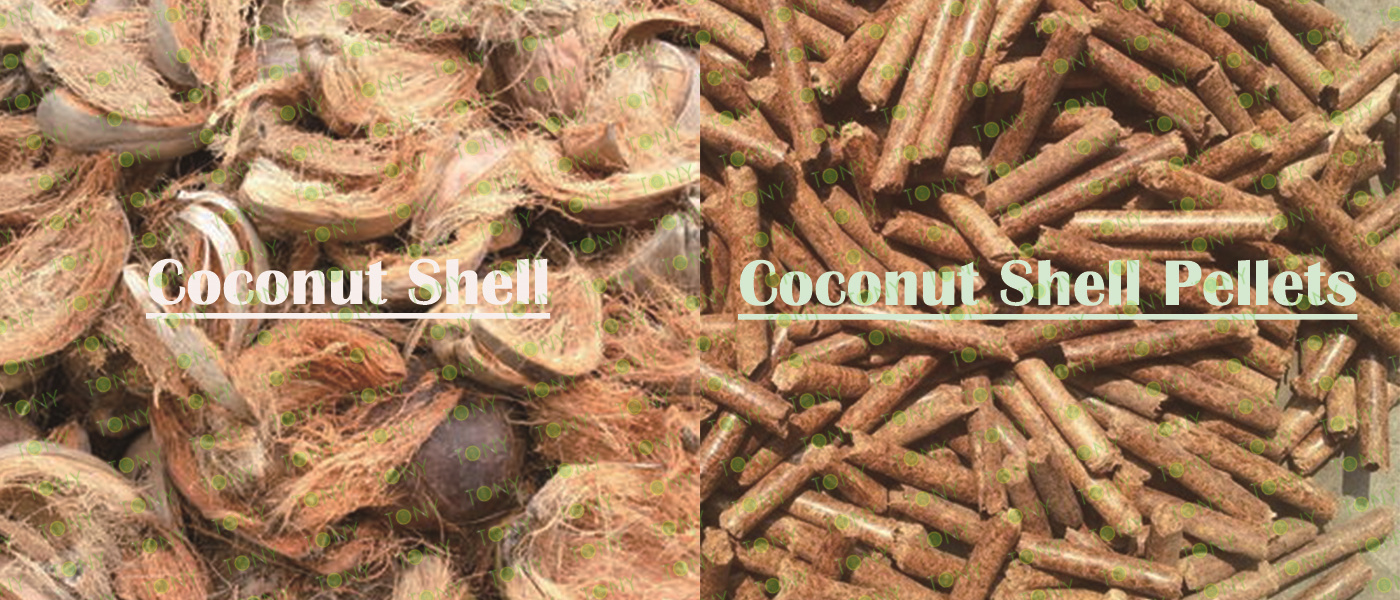
The following is the market prospect of using coconut shells to make pellets:
Energy Field
Biomass Fuel Pellets: With the increasing global demand for renewable energy, coconut shell pellets have broad market prospects as biomass fuel. It has the advantages of high calorific value and low ash content, and can be used for power generation, heating, etc. Compared with traditional fossil fuels, it is more environmentally friendly, helps to reduce greenhouse gas emissions, and meets the requirements of sustainable development. In some areas with rich biomass resources, the government will also introduce relevant policies to support the development of biomass fuels, further promoting the application of coconut shell pellets in this field.
Activated Carbon Production: Coconut shell is a high-quality raw material for making activated carbon, and activated carbon has important applications in many fields such as water treatment, air purification, gold extraction, and chemical industry. The global coconut shell activated carbon market size shows a growth trend. In 2023, the global coconut shell activated carbon market size is about 8.2 billion yuan, and it is expected to reach 9.1 billion yuan in 2030, with a compound annual growth rate (CAGR) of 5.5% during 2024-2030. Among them, granular activated carbon occupies a large market share. Activated carbon made from coconut shell particles is expected to continue to grow in market demand due to its excellent performance.
Agricultural Field
Soil Conditioner: The ash after burning coconut shell particles contains rich mineral elements and can be used as a natural soil conditioner. As people pay more attention to green and environmentally friendly agriculture, the demand for such natural and pollution-free soil conditioners will increase accordingly, which will help improve the yield and quality of crops and reduce the use of chemical fertilizers. The market prospects are good.
Animal Feed Additives: Properly treated coconut shell particles added to animal feed can promote animal digestion and absorption, improve animal immunity and production performance, and reduce feed costs to a certain extent. There is a certain market demand in the animal husbandry industry, especially for companies that focus on animal health breeding and cost control. Coconut shell particle feed additives are very attractive.


Suitable Physical Properties
Coconut shell has high hardness and density. This allows it to maintain a good shape and structural integrity after being made into particles. Its hardness makes the particles not easy to break during use, such as when used as an adsorbent or filter material, it can withstand a certain amount of pressure and friction.
Coconut shell particles have a good pore structure. This pore structure can provide a large specific surface area, which is conducive to applications such as adsorption and filtration. For example, in sewage treatment, the pores of coconut shell particles can adsorb impurities and pollutants in the water.
Chemical Properties Are Stable
Coconut shell is mainly composed of cellulose, lignin and other components. These components make coconut shell have good chemical stability and can resist corrosion from chemicals such as acids and alkalis. In some chemical industrial processes, such as as a catalyst carrier, coconut shell particles can exist stably under certain chemical conditions and will not easily undergo chemical reactions and decompose.
Environmental Protection And Sustainability
Compared with some traditional materials, coconut shell is a natural and renewable resource. Using coconut shell to make particles is a reuse of waste, which is in line with the concept of environmental protection and sustainable development. It can reduce dependence on non-renewable resources, and after its life cycle, coconut shell particles can be naturally degraded and will not cause long-term environmental pollution like some plastic materials.
Cost-Effectiveness Advantage
As a waste product of coconut processing, coconut shell itself has a relatively low cost. In the process of processing it into pellets, in some coconut producing areas, due to the sufficient raw materials, the equipment and technology are gradually mature, which further reduces the production cost. This makes coconut shell pellets have a certain price competitiveness in the market. For example, as a soil conditioner in the horticultural field, its cost-effectiveness is more advantageous than some other commercial soil improvement materials.
Wide Range Of Applications
Coconut shell pellets are used in many fields. In horticulture, it can be used as a soil conditioner to increase the air permeability and water retention of the soil. In the energy field, after special treatment, it can be used as biomass fuel pellets for power generation or heating. In the field of adsorption and filtration, it can be used to treat sewage, purify the air, etc. Its versatility is also one of the reasons why people choose to use coconut shells as pellets.

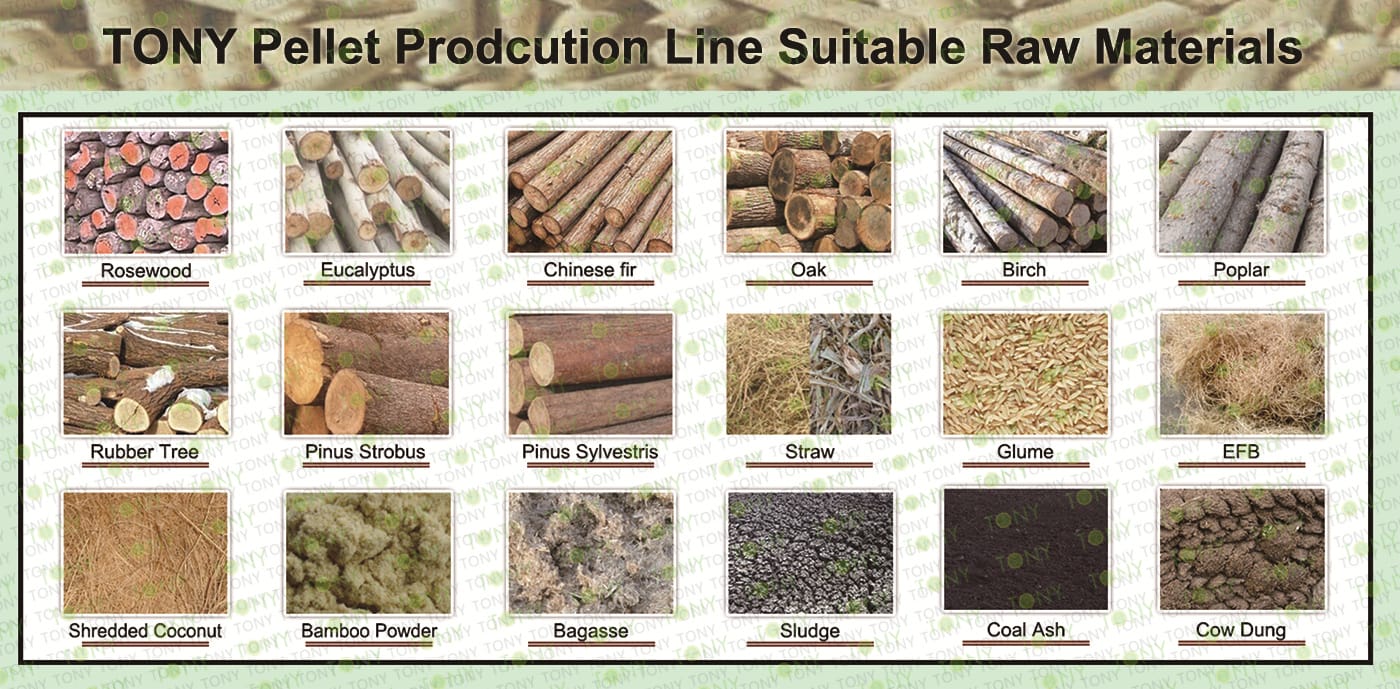
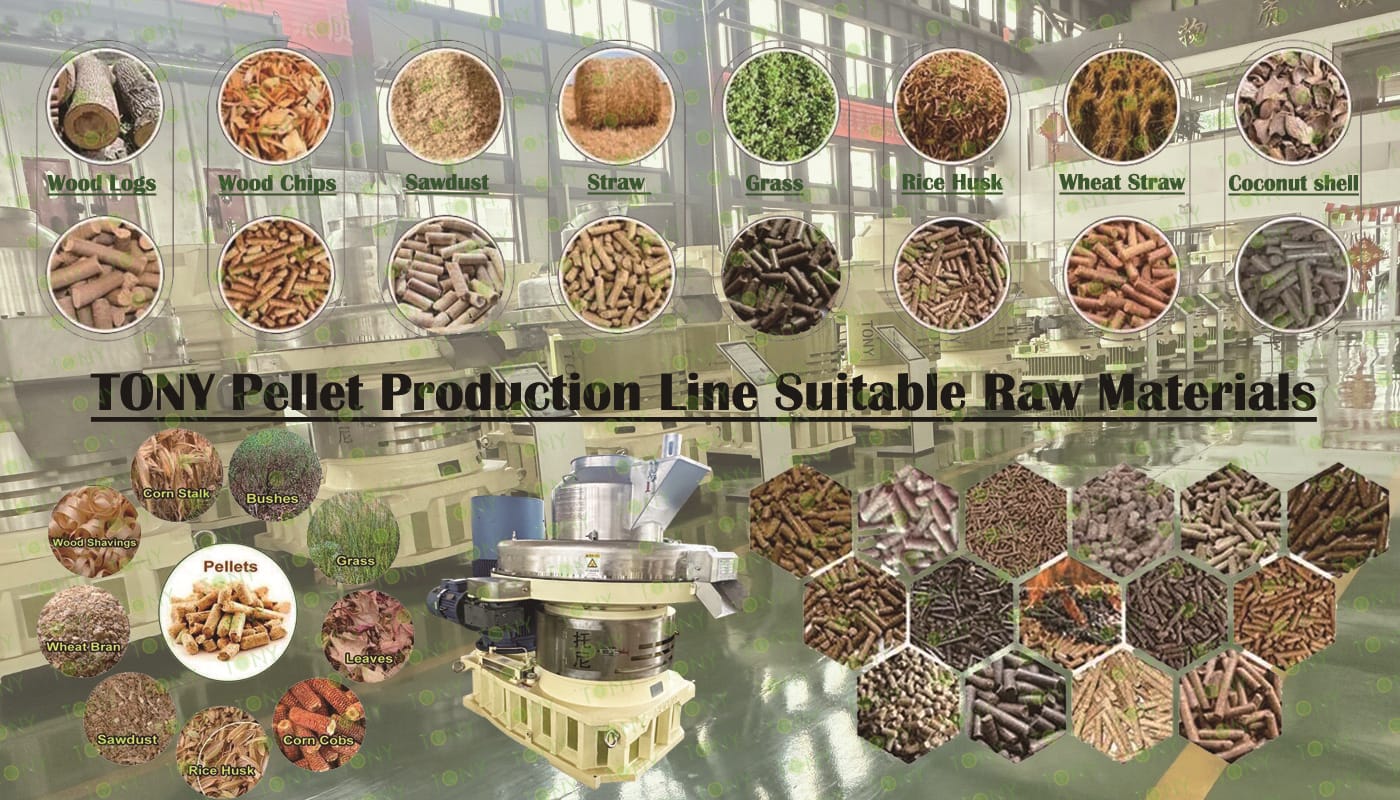



Shandong TONY Environmental Protection SCI-TECH CO., LTD. (formerly Zhangqiu TONY Machinery Co., LTD.)is an integrated enterprise specializing in developing, anufac-turing and international trade of pellet equipments for over 20 years.
Main products are biomass ring die and flat die pellet machine,biomass pellet line, feed pellet machine, drying, crushing equipments,cooling and ton packing machine.
Looking to the future, we sincerely hope to establish a long-term reliable cooperation relationship with clients all over the world!
Tony is a professional manufacture for biomass pellet machine,pellet production line in China for over twenty years.Main products are biomass ring die and flat die pellet machine,biomass pellet line, feed pellet machine, drying, crushing equipments,cooling and ton packing machine.
The new pellet machine adopts stainless steel material ,with high capacity and lower consumption ,which is highly pressed by domestic and abroad all over the world.
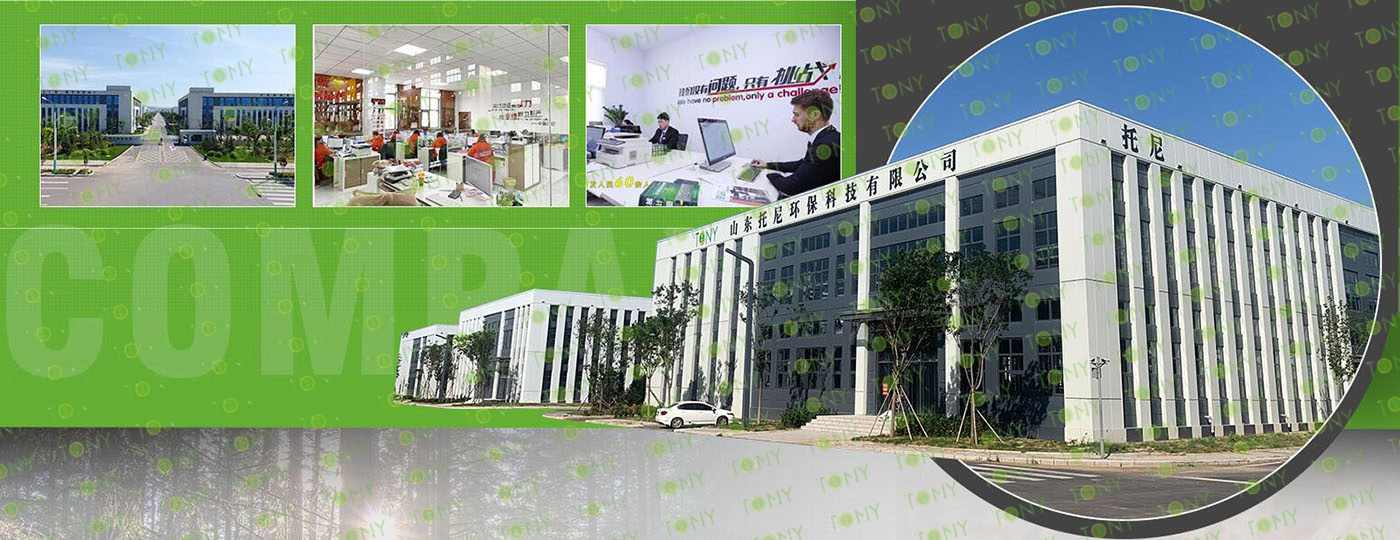
2025 Tony Machinery - All Rights Reserved. Map